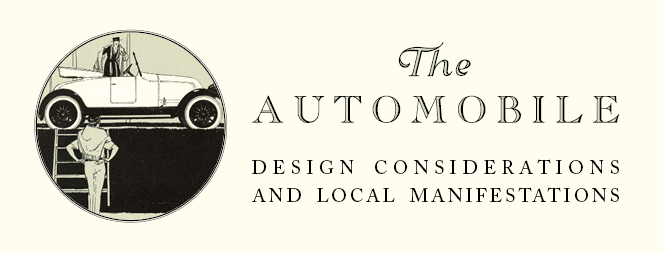The Automobile: Design Considerations and Local Manifestations Special Collections Research Center
Page featured image content

Page main body content
Bird Library
01-20-2015 to 10-07-2015
Reception: January 22, 2015 / 6:00 pm (Immediately following the lecture by Kevin Borg) / Sixth floor gallery / Bird Library
Syracuse, New York, has had a number of industrial associations. Perhaps it was first known as the “Salt City.” It was also known for being at the center of a large canal system. Over the years, Syracuse was also prominently connected with the manufacture of typewriters, shotguns, shoes, plows, carriages, automobiles, and air conditioners. This exhibition focuses upon the automobile and its local industrial manifestations, but also explores some of the automobile construction concepts represented in the Special Collection Research Center’s industrial design collections. Material related to the most famous of Syracuse’s automobile lines, the air-cooled Franklin car with its remarkably flexible and durable wooden frame, is one of the highlights of this exhibition.
Among the designers represented in our collections, Howard A. Darrin, Claude Hill, Raymond Loewy, Budd Steinhilber, and Walter Dorwin Teague are known for their contributions to the development of the automobile. For example, Howard A. Darrin was known for his designs for exotic luxury and sports cars. Claude Hill created some important concept car designs. Raymond Loewy’s photographs document a number of striking Studebaker model designs. Budd Steinhilber was a member of the design team for the revolutionary rear-engined 1948 Tucker automobile, and Walter Dorwin Teague designed for both the Ford Motor Company and the Marmon Motor Company. Some of these designers’ concepts are on view here in the form of drawings, sketches, and photographs.
Included in this exhibition are images from a photographic album from the summer of 1905 with 784 photographs chronicling an automobile tour through Europe. A curious circumstance about the album is that while some of the locations in the album are identified, including London, Cambridge, Windsor, Le Mans, Nantes, Paris, Reims, Strasbourg, Vienna, Prague, Dresden, Berlin, Seville, and Granada, there are no other names in it, and there is no information about its creators. The University Archives in the Syracuse University Libraries also contributed photographs and cartoons that captured the presence of the automobile on campus. This exhibition could not purport to touch upon all dimensions of the development of the automobile in Syracuse, but our hope is that it provides a sampling of the ways in which the automobile evolved in Syracuse and a glimpse into the innovations of some of the most significant mid-twentieth-century automobile designers prominently represented in our collections.
